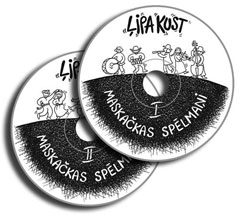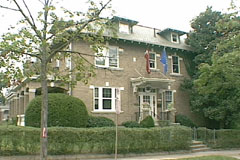The Rīga folk ensemble Maskačkas spēlmaņi in December released a new album consisting of two compact discs and a detailed, illustrated booklet of folk dances from around Latvia.
Ļipa kust includes 33 tracks, some with vocals, some without. The album is the ensemble’s fourth. The band’s previous album, Pāri jumtam, was released in 2003.
In addition to good explanations of how to perform the various dances represented on the discs, the album is remarkable for its translation. Rather than offering English or Russian as the alternative to Latvian, Ļipa kust provides an Esperanto version.
The dance notations are by Sniedze Grīnberga and the illustrations by Marita Grase.
Maskačkas spēlmaņi has been around since 1995. Members include leader Ansis Ataols Bērziņš, Jānis Barons, Ieva Bērziņa, Zane Kriumane, Oskars Patjanko, Paulis Paulins and Jurģis Ukrins. The band’s focus is lively Latvian country dance music from the late 19th and early 20th centuries.
The ensemble takes its name from the Maskavas forštate district of Rīga, an area east of the Central Market along the Daugava River.
For more on the ensemble, visit maskacka.folklora.lv.

The album Ļipa kust is the fourth by folk ensemble Maskačkas spēlmaņi.




